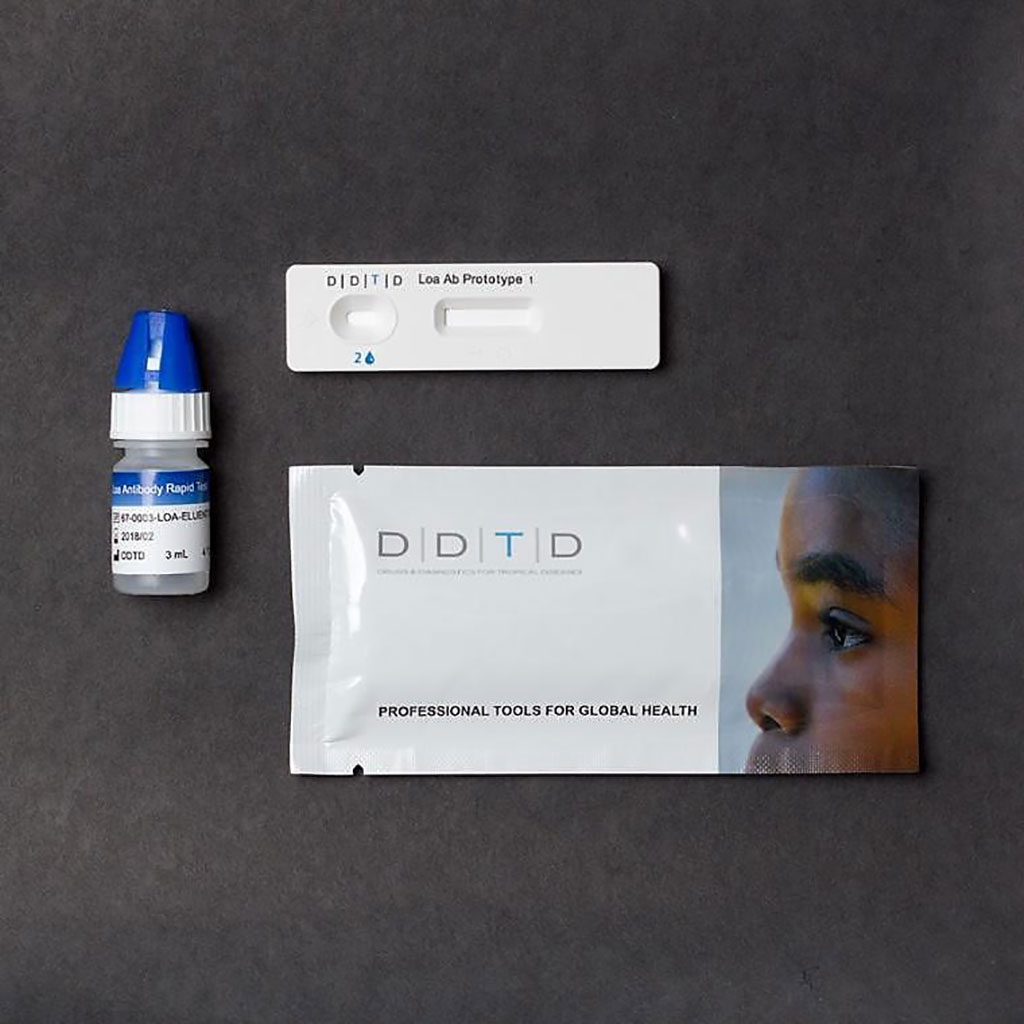Two Serodiagnostic Tests Compared for Loiasis in Non-Endemic Area
By LabMedica International staff writers
Posted on 18 Jun 2020
Loiasis, the disease caused by the infection with the filarial nematode Loa loa, is transmitted through the bite of tabanid flies of the genus Chrysops. It is endemic in Central and West Africa where, according to the most recent estimates, about 10 million people are infected.Posted on 18 Jun 2020
There is a scarcity of convenient, commercial diagnostics for L. loa. Microscopy requires trained personnel and has low sensitivity, while the serodiagnosis is currently not standardized. Individual case management is also important in non-endemic countries to treat migrants, expatriates and tourists.

Image: The Loa Antibody Rapid Test detects human IgG against a 148-aminoacid sequence of Ll-SXP-1 (Photo courtesy of Drugs & Diagnostics for Tropical Diseases).
Scientists at the Sacro Cuore Don Calabria Hospital (Verona, Italy) retrospectively compared the performance of an Antibody Rapid Test (RDT) and a commercial ELISA pan-filarial test on 170 patients, 65 with loiasis [8 with eyeworm, 29 with positive microfilaremia, 28 with neither microfilaremia nor history of eyeworm but eosinophilia and history of Calabar swelling (probable loiasis)], 95 with other common parasitic infections and no previous exposure to L. loa (37 with M. perstans, one with Brugia sp., 18 with strongyloidiasis, 20 with schistosomiasis, five with hookworm, four with Ascaris lumbricoides infection, 10 with hyper-reactive malarial splenomegaly), and 10 uninfected controls.
The Loa Antibody Rapid Test (RDT, Drugs & Diagnostics for Tropical Diseases, San Diego, CA, USA) detects human IgG against a 148-aminoacid sequence of Ll-SXP-1, a protein with 51–53% sequence identity with Wuchereria bancrofti and Onchocerca volvulus, the two most clinically relevant filarial species. The commercial ELISA kit uses Acanthocheilonema viteae antigens (Bordier Affinity Products, Crissier, Switzerland) and this test is not specific for single filarial species, and detects IgG against various filarial nematodes affecting humans.
The investigators reported that the sensitivity of the RDT and of the ELISA were 93.8% (61/65) and 90.8% (59/65), respectively. For the RDT, most of the cross-reactions were observed in patients with M. perstans: 7/37 (18.9%), followed by 1/10 (10%) with hyper-reactive malarial splenomegaly and 1/20 (5%) with schistosomiasis. None of the 27 subjects infected with intestinal nematodes was found positive with this test. The ELISA is meant to be a pan-filarial assay, and reacted extensively with cases of M. perstans (95%), as expected, and also in 11/18 (61.1%) patients with strongyloidiasis and in 3/5 (60%) with hookworm infection.
The authors concluded that the novel lateral flow RDT has proven to be an accurate and user-friendly tool for the diagnosis of L. loa infection. While some cross-reactivity with M. perstans should be taken into account when considering its potential application as a screening tool in endemic areas, on the other hand this new test appears to be promising in the of non-endemic setting, where it could be included in a management algorithm. The study was published on May 26, 2020 in the journal PLOS Neglected Tropical Diseases.
Related Links:
Sacro Cuore Don Calabria Hospital
Drugs & Diagnostics for Tropical Diseases
Bordier Affinity Products













